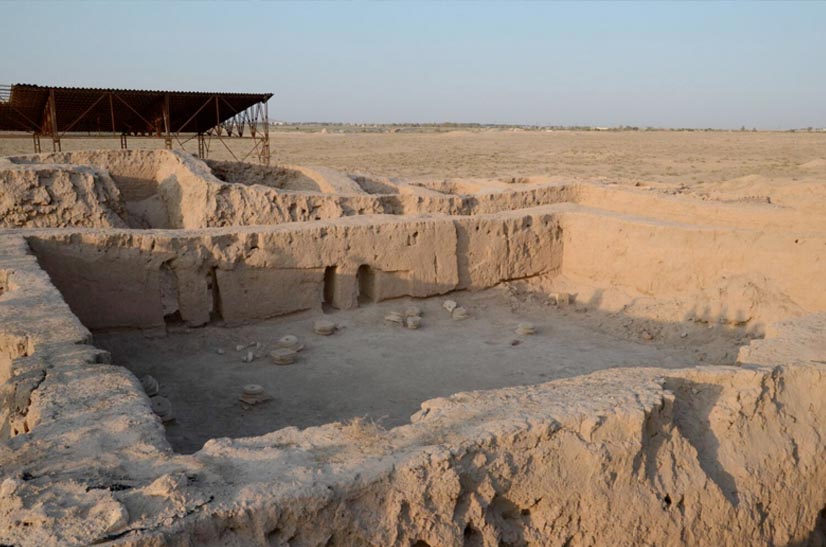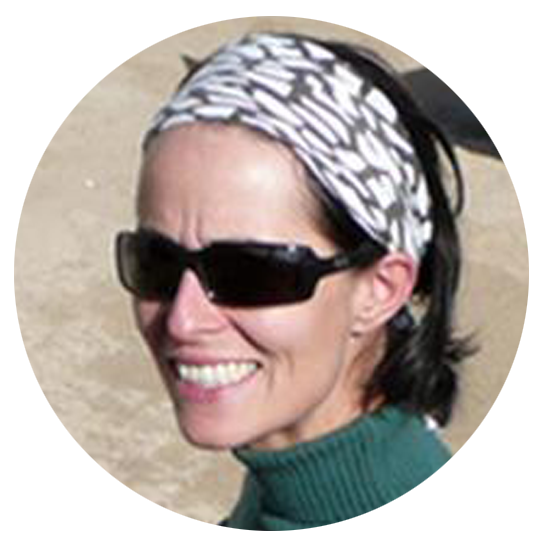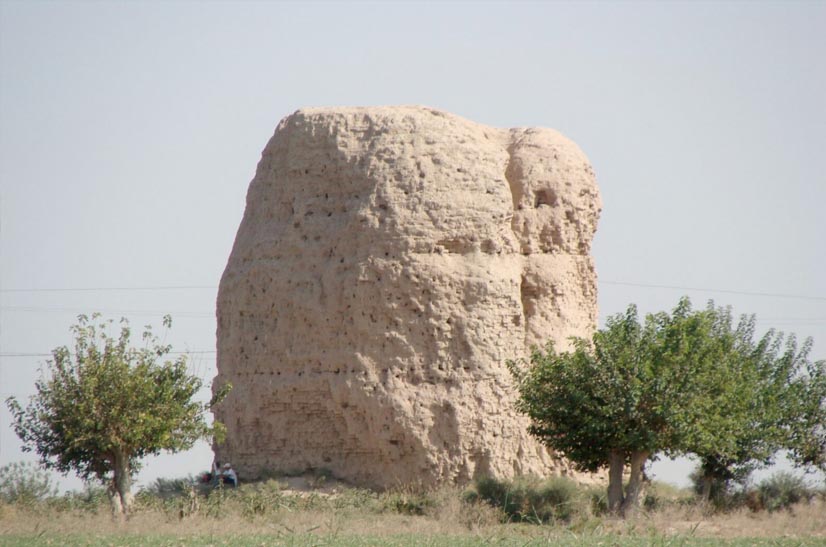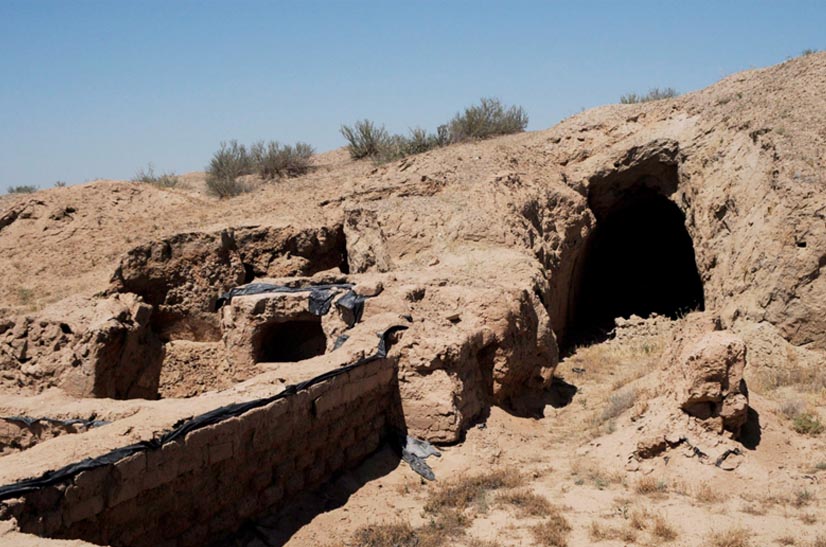TERMEZ
(UZBEKISTAN)

The archaeological mission led by ERAAUB in Termez (Uzbekistan), called the International Pluridisciplinary Archaeological Expedition to Bactria (IPAEB), has shown itself to be one of the most important international archaeological projects in Central Asia. Termez is one of the great cities of the Silk Road, located at the intersection of the intercontinental routes linking, on the one hand, Samarkand and the Eurasian Steppes with Kabul and the Indian subcontinent and, on the other, the Mediterranean and the Near East with Kashgar and China. The city is located on the banks of the Amu Darya, the former Oxus, which forms the current border between Uzbekistan and Afghanistan. It appears mentioned in Greek, Latin, Arab, Persian, Armenian, Indian, Central Asian, Tibetan, Turkish, Mongolian and Chinese sources. The ancient Termez deposit extends over more than 70 hectares and is made up of several settlements that are the result of continued occupation from the Achaemenid / Seléucida period to the Islamic period in whose archaeological research they collaborate, among others, the Institute of Archeology of Samarkand or the Institute of Fine Arts of Tashkent both of the Academy of Sciences of Uzbekistan and Western research teams (Universitat de Barcelona , CNRS-École Normale Superior de Paris) and Asians (Kanazawa University of Japan and National Research Institute of Cultural Heritage of South Korea). The final purpose of that broad study is a transference of knowledge and the development of new methodologies for research in the service of the archaeological science in the country. The archaeological research developed by the IPAEB has been based on multiple methodological approaches:
1) geomorphological and taphonomic studies to determine the geomorphological and paleoenvironmental specificities of this semi-arid environment and for a better understanding of the formation of the archaeological site itself.
2) geophysical surveys using several methods that have been shown to be more or less effective in the correct location of the archaeological sequences and ceramic production centres.
3) stratigraphic excavation of the archaeological record accompanied by extensive topographical, infographic and photographic documentation and data recording in the Proleg StratiGraf computer system.
4) long series of absolute dates by 14C, to contextualize the material culture and better situate some urbanistic phases of the old Termez over time.
5) the study of material culture, especially ceramic contexts, to establish the first chrono-typological corpus of ceramics from various sites in the Surkhan Darya valley and attributable to various chronologies.
In 2010, a cooperation other project UNESCO projects for the Conservation and Preservation of archaeological sites of Ancient Termez, Surkhandarya, was started. That broader project is oriented to the conservation (consolidation) and rehabilitation of architectonic structures of the complex as well as to determine the environmental problems that affect the preservation of those.
REFERENCES:
GURT ESPARRAGUERA, J.M., 2011, Aplicación de nuevas técnicas y metodologías arqueológicas en la estepa asiática y sistematización de resultados. Termez, Uzbekistán, Informes y Trabajos. Excavaciones en el exterior 2009 5, Ministerio de Cultura, Madrid, 354-381.
GURT ESPARRAGUERA, J.M., ARIÑO GIL, E., MARTÍNEZ FERRERAS, V. y PIDAEV, S.R., 2015, The Buddhist occupation of Tchingiz Tepe (Termez, Uzbekistan) in the Kushan period through the ceramic contexts, Archaeological Research in Asia 3, 19-33.
GURT ESPARRAGUERA, J.M. y MARTÍNEZ FERRERAS, V., 2012, Afghanistan and Central Asia, en N.A. SILBERMAN (ed.), The Oxford Companion to Archaeology. Second Edition, Oxford University Press, 23-25.
GURT ESPARRAGUERA, J.M., MARTÍNEZ FERRERAS, V. y ARIÑO GIL, E., 2012, El recinto fortificado de Tchinguiz Tepe (Termez, Uzbekistán). Entre el periodo Greco-Bactriano y el periodo Kushano-Sasanida, Informes y trabajos. Excavaciones en el exterior 2010 7, Ministerio de Cultura, Madrid, 385-399.
MARTINEZ FERRERAS, V., ARIÑO GIL, E., GURT ESPARRAGUERA, J.M. y PIDAEV, S.R., 2014, The enclosure of Tchingiz Tepe (ancient Termez, Uzbekistan) during the Kushan and Kushan-Sassanian periods. Archaeological stratigraphy and 14C dating analyses, Iranica Antiqua 49, 413-474.
MARTÍNEZ FERRERAS V, ANGOURAKIS A., HEIN A., AULINAS JUNCÀ M., GARCIA‐VALLES M., GURT ESPARRAGUERA JM., ARIÑO GIL E., SÁNCHEZ DEL CORRAL A., PIDAEV SH. R. 2018, Assessing Hellenistic to nomadic cultural patterns through pottery in ancient Termez, Uzbekistan, Georchaeology, First published: 27 December 2018 on line: https://doi.org/10.1002/gea.21714
MARTINEZ FERRERAS, V.; FUSARO, A.; GURT ESPARRAGUERA, ARIÑO GIL, E., PIAEV, SH.; R.; ANGOURAKIS A., 2019, The Islamic Ancient Termez Through the Lens of Ceramics: A New Archaeological and Archaeometric Study, Published online: 16 Mar 2019: https://doi.org/10.1080/05786967.2019.1572430

Josep Maria Gurt


